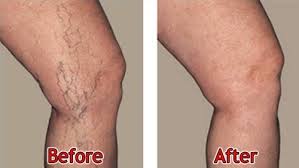
Varicose veins are enlarged, twisted veins that often appear on the legs and feet, caused by faulty valves that allow blood to pool instead of flowing efficiently. They can lead to symptoms like pain, swelling, and heaviness in the legs. Factors such as genetics, prolonged standing, obesity, and pregnancy increase the risk of developing varicose veins. While they are primarily a cosmetic concern, severe cases can lead to complications like ulcers or blood clots. Treatment options include lifestyle changes, compression stockings, and medical procedures like sclerotherapy or laser treatment. Early diagnosis and intervention can prevent worsening symptoms. Maintaining a healthy weight, exercising regularly, and elevating the legs can also aid in prevention. If you’re experiencing discomfort, consult a healthcare professional for proper evaluation and management.
Causes of Varicose Veins
- Weak or Damaged Valves:
- Heredity:
- Prolonged Standing or Sitting:
- Age and Hormonal Changes:
- Obesity:
- Lifestyle Changes:
- Compression Stockings:
- Sclerotherapy:
- Laser Treatment:
- Surgery:
Veins have one-way valves that prevent blood from flowing backward. When these valves weaken, blood collects, causing veins to enlarge.
A family history of varicose veins increases the likelihood of developing them.
Occupations requiring long hours of standing or sitting can contribute to vein damage.
Aging and hormonal changes during pregnancy or menopause can affect vein elasticity.
Excess weight adds pressure to the veins, making it harder for blood to circulate.
Symptoms of Varicose Veins
.Visible, bulging veins that are blue or dark purple
.Aching or throbbing pain in the legs
.Swelling, particularly around the ankles
.Burning or itching sensation over the veins
.Muscle cramping and restlessness, especially at night
Treatment Options for Varicose Veins
Regular exercise, maintaining a healthy weight, and elevating the legs can help manage symptoms.
These provide gentle pressure, improving blood flow and reducing swelling.
A non-surgical procedure where a solution is injected into the veins to close them.
Minimally invasive laser procedures effectively reduce varicose veins.
In severe cases, vein stripping or ligation may be recommended to remove or close damaged veins.
Prevention of Varicose Veins
.Stay active with regular leg exercises to improve circulation.
.Avoid prolonged sitting or standing, taking breaks to move around.
.Maintain a healthy weight to reduce vein pressure.
.Elevate legs when resting to promote blood flow.
Conclusion
Varicose veins are a common but manageable condition. Early diagnosis and adopting healthy habits can significantly reduce symptoms and prevent further complications. Consulting with a vascular specialist for personalized treatment options ensures the best care. If you're concerned about varicose veins, consider seeking medical advice to regain comfort and confidence in your legs.